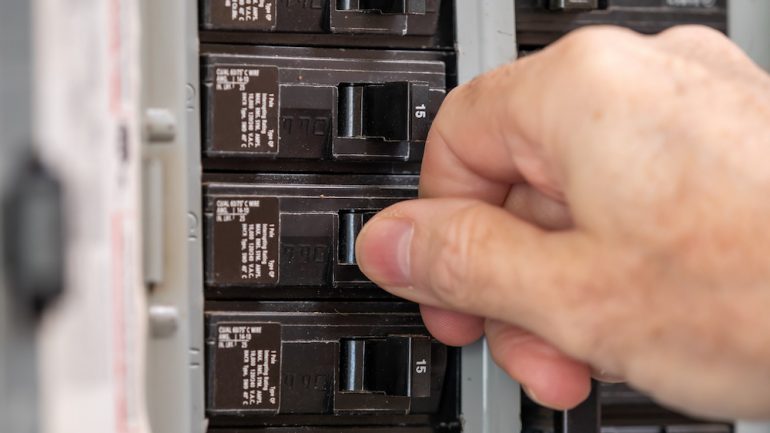Most homeowners deal with their homes’ electrical circuit breakers only when a breaker “trips” and lights or electrically powered devices stop working. But the circuit breaker box is a vital safety system and one of the most important components in any building. Let’s cover the basics of circuit breakers and how to manage them when you need to.
What circuit breakers do
Electrical breakers connect the house and its individual circuits to the outside power source, which provides the home 240 volts of electricity. Inside the breaker box, one large breaker receives all of that power via two main service wires. Beneath or above that breaker are two columns of smaller breakers called buss bars, which are each connected to 120 volts of electricity. Circuits in the house that need 120 volts to connect to one buss, and circuits needing 240 connect to both.
The circuit breakers serve two crucial functions. Not only do they connect the house and individual circuits to the electrical supply, they “trip,” or break, the circuit if a dangerous electrical situation develops. If there is a power surge, or if a circuit tries to draw more power than the wires can safely handle, breakers trip.
Safely managing your breakers
The main circuit breaker can be used to shut down power to the entire house before electrical service work. The main breaker will trip when there’s a major, system-wide surge, such as a lightning strike. It will also trip when one of the smaller breakers connected to it fails to trip, causing the main breaker to act as a backup.
If the main breaker needs to be shut off, begin by turning off each individual breaker, then shut off the main. When ready to restore power, turn on the main breaker first, then the individual breakers one by one. These steps prevent the entire load of the home’s circuits from drawing on the main breaker at once.
If the main breaker is tripped, first determine the cause and whether it is safe to reset it. Then turn off the individual breakers before resetting the main breaker. Finally, turn on the individual breakers one by one.
The smaller breaker switches will trip when the power load to them exceeds their individual limits. If a breaker trips and you lose power to a part of the house, you can spot the tripped breaker in the box because it will be positioned halfway between closed and open. It will also feel slightly loose to the touch. Before trying to reset a smaller breaker that has tripped because too many electrical devices were running on one circuit, lighten the load by shutting some off or moving them to a different circuit. To reset the breaker, first, switch it fully off, then back fully on.
Do not handle circuit breakers with wet hands or when standing in water. Because sparks or flashes can occur, though they are rare, stand slightly to the side of the box rather than face the breakers when turning them on.
Related – Electricity: Your Home’s Risky Resource


